第27章 MONEY OR SIMPLE CIRCULATION(8)
But if the sale actually takes place,as we assume in this analysis of simple circulation,then this difficulty,the salto mortale of the commodity,is surmounted.As a result of this alienation --that is its transfer from the person for whom it is a non-use-value to the person for whom it is a use-value --the ton of iron proves to be in fact a use-value and its price is simultaneously realised,and merely imaginary gold is converted into real gold.The term "ounce of gold"or 317s.101/2d.,has now been replaced by an ounce of real gold,but the ton of iron has gone.The sale C --M does not merely transform the commodity --which by means of the price was nominally turned into gold --really into gold,but gold,which as measure of value was only nominally gold and in fact functioned only as the money name of commodities,is through the same process transformed into actual money.[1]As gold became nominally the universal equivalent,because the values of all commodities were measured in terms of gold,so now,as a result of the universal alienation of commodities in exchange for it --and the sale C --M is the procedure by which this universal alienation is accomplished --does it become the absolutely alienated commodity,i.e real money.But gold becomes real money through sale,only because the exchange-values of commodities expressed in prices were already converted into nominal gold.
During the sale C --M,and likewise during the purchase M --C,two commodities,i.e.,units of exchange-value and use-value,confront each other;but in the case of the commodity exchange-value exists merely nominally as its price,whereas in the case of gold,although it has real use-value,its use-value merely represents exchange-value and is therefore merely a formal use-value which is not related to any real individual need.The contradiction of use-value and exchange-value is thus polarised at the two extreme points of C --M,so that with regard to gold the commodity represents use-value whose nominal exchange-value,the price,still has to be realised in gold;with regard to the commodity,on the other hand,gold represents exchange-value whose formal use-value still has to acquire a material form in the commodity.The contradictions inherent in the exchange of commodities are resolved only by reason of this duplication of the commodity so that it appears as commodity and gold,and again by way of the dual and opposite relation in which each extreme is nominal where its opposite is real,and real where its opposite is nominal,in other words they are resolved only by means of presenting commodities as bilateral polar opposites.
So far we have regarded C --M as a sale,as the conversion of a commodity into money.But if we consider it from the other side,then the same transaction appears,on the contrary,as M --C,a purchase,the conversion of money into a commodity.A sale is inevitably and simultaneously its opposite,a purchase;it is the former if one looks at the transaction from one side and the latter if one sees it from the other.In other words,the difference between the transactions is in reality merely that in C --M the initiative comes from the side of the commodity or of the seller while in M --C it comes from the side of money or of the purchaser.When we describe the first metamorphosis of the commodity,its transformation into money,as the result of the first phase of the circuit,we simultaneously presuppose that another commodity has already been converted into money and is therefore now in the second phase of the circuit,M --C.We are thus caught up in a vicious circle of presuppositions.This vicious circle is indeed circulation itself.If we do not regard M in C --M as belonging to the metamorphosis of another commodity,then we isolate the act of exchange from the process of circulation.But if it is separated from the process,the phase C --M disappears and there remain only two commodities which confront each other,for instance iron and gold,whose exchange is not a distinct part of the cycle but is direct barter.At the place where gold is produced,it is a commodity like any other commodity.Its relative value and that of iron or of any other commodity is there reflected in the quantities in which they are exchanged for one another.But this transaction is presupposed in the process of circulation,the value of gold is already given in the prices of commodities.It would therefore be entirely wrong to assume that within the framework of circulation ,the relation of gold and commodities is that of direct barter and that consequently their relative value is determined by their exchange as simple commodities.It seems as though in the process of circulation gold were exchanged merely as a commodity for other commodities,but this illusion arises simply because a definite quantity of a given commodity is equalised by means of prices with a definite quantity of gold:that is,it is compared with gold as money,the universal equivalent,and consequently it can be directly exchanged for gold.In so far as the price of a commodity is realised in gold,the commodity is exchanged for gold as a commodity,as a particular materialisation of labour-time;but in so far as it is the price of the commodity that is realised in gold,the commodity is exchanged for gold as money and not as a commodity,i.e.,for gold as the materialisation of general labour-time.But the quantity of gold for which the commodity is exchanged in the process of circulation is in both cases determined not by means of exchange,but the exchange is determined by the price of the commodity,by its exchange-value calculated in terms of gold.[2]